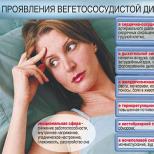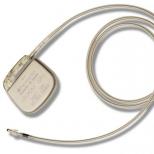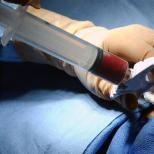Heart pacemaker: what is it, indications and contraindications, including by age, installation, patient reviews + photos and videos
Cardiovascular diseases in a civilized society occupy the first place among the causes of disability and mortality. An important component of these pathological conditions are cardiac arrhythmias. The modern method of treating many of them is the installation of a heart pacemaker.
Pacemaker: definition of the concept and how it affects the work of the heart
A pacemaker is an electronic device designed to monitor the patient's rhythm and, if necessary, correct it.
In the literature, the media can be found such synonyms: pacemaker, artificial pacemaker, EX.
Consists of two parts:
- An electrode placed in the cavity of the heart for reading and conducting electrical signals. It can withstand various changes in shape that are inevitable when the patient moves and the heart beats. The electrode is in contact with the inner surface of the heart (endocardium) using a tip that clings to the internal structures of the heart (valvular chords) or is screwed into the heart muscle like a corkscrew to maintain stable conduction of impulses.
- A pacemaker housing containing a processor with a set of programs for controlling the device and an electric long-term battery. The electronic circuit is the commander-in-chief, which determines the need to supply an electric shock (impulse) to the heart muscle. An impulse has characteristics akin to an electric current in a socket: strength, resistance, shape. The pacemaker in all cases operates in the “on demand” mode, that is, it sends an electrical signal to the heart only if it sees a need for it. The latter is determined by the installed program. Some pacemakers have a program that increases the basal rhythm depending on the intensity of physical activity (rate adaptation).
According to the number of electrodes installed in the heart, pacemakers are divided into three categories: single-chamber (with one electrode), two-chamber (with two electrodes) and three-chamber (with three electrodes). The type of pacemaker to be installed is determined by the doctor, taking into account the patient's disease. The number of chambers does not determine the quality of the pacemaker.
Appearance of one- and two-chamber pacemakers - gallery
In Russia, the manufacture of pacemakers is carried out by companies - Cardioelectronics, Elestim-cardio. There are many foreign companies supplying devices to our country: Medtronic, Boston Scientific, Sorin, Biotronic and others. If the patient has a choice, it is preferable to install an imported pacemaker.
Models of various manufacturers - photo gallery
pacemaker model. Manufacturer Biotronic 
 pacemaker model. Manufacturer Medtronic
pacemaker model. Manufacturer Medtronic  pacemaker model. Manufacturer Cardioelectronics
pacemaker model. Manufacturer Cardioelectronics ![]() pacemaker model. Boston Scientific
pacemaker model. Boston Scientific
Indications for device implantation
The main indication for the installation of a pacemaker is bradycardia (rare rhythm). The normal number of heartbeats is normally 60 to 90 beats per minute.
There are two reasons for slow heart rate:
- Violation of the formation of an electrical signal in the main own pacemaker (sinus node). As a result, the pulse rate can significantly decrease, or large periods of time appear between normal heart contractions when the signal is absent (rhythm pauses).
- Violation of the conduction of impulses on the heart from the main driver to the heart muscle. This situation is called heart block.
Indication for implantation - heart block - video
Atrial fibrillation (or, in other words, atrial fibrillation) is an indication for installing the device only if, against its background, the pulse is recognized as very rare, or if intervals of more than five seconds are recorded between individual heartbeats. The mechanism of development in this situation is heart block.
To determine the diagnosis, the doctor prescribes a daily recording of the patient's rhythm - Holter ECG monitoring. Only after conducting this study, the doctor can recommend the installation of the device and its type.
Contraindications
Contraindications for the installation of a pacemaker are:
- Acute myocardial period (for heart blockades - at least 10 days)
- Acute period of cerebrovascular accident ()
- Acute respiratory diseases
- Exacerbation of chronic diseases
- Inflammatory process at the site of the intended installation of the device
- Deviations in laboratory values until the cause is clarified
Age is not a contraindication to the installation of a pacemaker.
Intervention preparation
Before agreeing to the operation, the patient in a conversation with the doctor needs to find out:
- what disturbance of the rhythm led to this situation,
- what type of device is planned to be installed,
- in what mode (round the clock or from time to time) the pacemaker will operate,
- what restrictions it expects subsequently.
On the eve of the intervention are required:
- Examination of the anesthesiologist
- Shaving the chest from the side of the planned installation of the device
- Cleansing enema
- Last meal and water the night before surgery
- If the patient is receiving insulin or other hypoglycemic drugs, their intake is delayed until the first meal after surgery
Pacemaker insertion technique
Installation (implantation) of a pacemaker in adult patients is carried out under local anesthesia (Lidocaine, Ultracaine). In children, implantation takes place under general anesthesia.
The place of installation of the apparatus in adults is the area under the left collarbone. If it is impossible to use this access (inflammatory process, clavicle fracture on the left side, the desire of a left-handed patient), the intervention is performed on the right side. In children, the device is installed through an incision in the anterior abdominal wall.
At the main stage of the operation, an incision of about 5–6 centimeters is made, through which a stimulating electrode is installed through the vessel (subclavian vein) under X-ray control using a stylet conductor, after which a metal case is attached to it with screws. From that moment on, the pacing system begins to function. Then the quality of the electrode placement is checked by testing the parameters of the pacemaker. After obtaining satisfactory results, a pocket (bed) for the pacemaker is formed in the tissues of the subclavian region. Further, the integrity of the dissected tissues is restored by suturing. The latter may be self-absorbable, or they may need to be removed later. At the end of the operation, an aseptic bandage is applied.
 Scheme of installation of the components of the pacemaker
Scheme of installation of the components of the pacemaker
Rehabilitation
After the installation of the device, the patient does not need to be in the intensive care unit during the normal course of the operation. In the ward until the next morning, it is necessary to observe strict bed rest - do not get up, do not turn to one side, keep your hand on the side of the intervention with you, do not make sudden movements. For some time, ice should be kept at the pacemaker implantation site to prevent bruising. Before discharge, painkillers and antibacterial drugs are prescribed.
The next day, the patient is allowed to get up, the second time the parameters of the device are adjusted. The day after the operation, in the absence of complications, the patient is discharged from the hospital. Before the first check of the device after discharge (usually within a month), you must lie and sleep in a position strictly on your back, do not lift anything heavier than a kilogram with your left hand, do not throw your arm behind your head. It is advisable to refrain from driving a car (without power steering).
For some time, painful sensations, a feeling of “pulsation” may persist at the site of the pacemaker installation, which then gradually disappear as the patient gets used to the artificial rhythm.
What complications can be after the intervention
Complications of pacemaker implantation include:
- blood loss
- Bruising at the site of the device
- Sudden shortness of breath, weakness, a sharp deterioration due to injury to the lung in the subclavian region (pneumothorax)
- Displacement (dislocation) of the installed electrodes and, as a result, a violation of the mode of functioning of the pacemaker
- Inflammation at the site of surgery
- Formation of a tissue defect over the installed device (bedsore of the pacemaker bed)
After discharge from the hospital, the doctor will determine the frequency with which the patient needs to be in order to correct the stimulation parameters.
 Apparatus for testing pacemakers. Appearance
Apparatus for testing pacemakers. Appearance
The latter occurs without anesthesia and incisions by applying a special reader to the device - a programmer, which allows the doctor to change the set parameters if necessary. The reasons for an unscheduled visit to the doctor are:
- Episodes of loss of consciousness, including with stereotypical movements (raising the arm, turning the head)
- The appearance of a rare pulse (less than the minimum set frequency of the device)
- Twitching of the muscles of the stimulator bed with a frequency programmed in the memory of the pacemaker (cause - violation of the insulation of the electrodes)
- Impact at the location of the device (falling, airbag deployment in the car)
- electric shock
The pacemaker is designed solely to correct the patient's rhythm. The functioning of the device in the body does not affect the level and frequency of arrhythmia attacks, which the patient could have had before or appeared after installation.
With satisfactory parameters after the first check, the patient is allowed to sleep in any position, lift up to five kilograms with his left hand, and drive a car. The possibility of returning to work and the terms are determined by the medical commission.
After installing the device in everyday life, you can use all appliances (serviceable!): Washing machine, dishwasher, microwave oven, TV, cellular and radio telephone, electric toothbrush, electric razor, hair clipper, hair dryer and others.
When passing metal detectors in stores, present a patient card with an implanted device. It is not recommended to pass through the pre-flight control devices at the airport (present the patient card).
All sports are allowed, with the exception of those associated with lifting weights; team games with caution (it is necessary to protect the pacemaker from direct impact).
Drinking alcohol and coughing does not affect the operation of the device.
From medical procedures are allowed:

The following medical procedures are prohibited:
- Magnetic resonance imaging
- Remote lithotripsy
- Electrocoagulation
- Diathermy
- electrophoresis
- Magnetotherapy (including the Almag apparatus)
- Electromyostimulation
It must be remembered that the pacemaker will now be present in the patient's body for life. Over time, the pacemaker battery reduces its capacity, so you need to come for a checkup at the time agreed with the doctor. On average, the period of operation of a pacemaker is from 5 to 15 years (this indicator is affected by the type of disease, the percentage of one's own rhythm and the rhythm of the pacemaker, as well as the set settings). With a small residual capacity of the battery, the operation of replacing the pacemaker is provided - through the incision, replacing one apparatus with another, if necessary, placing new electrodes in the heart.
The pacemaker, unfortunately, is not a panacea for eternal life. The life expectancy of patients with an implanted pacemaker is the same as for patients who have not undergone such an intervention.
Cardiac pacemaker: patient reviews
I have a lot of friends who live with stimulants and while pah - pah there are those who wear it for 10 years. I don’t know the exact specifics, but I know that a friend has been wearing it for 5 years and does not feel it. She also, when the pressure rises, they make droppers, and they treat like everyone else. She says that sometimes, even with a stimulant, she has attacks of arrhythmia, but they are not as severe as they used to be. In general, she is satisfied. You have to live somehow.
Sima
2.5 months ago I had a two-chamber EX-454, two ELBI electrodes - atrial and ventricular. I have less shortness of breath and it became a little easier to breathe. But the ventricular electrode creates discomfort. I constantly feel his blows (or contractions) and very strongly, especially if I lie on my left side, even when I sit, I feel. Very unpleasant. This is the fourth EX. The previous ones were single-chamber. I am 65 years old.
Guzhova
http://forumjizni.ru/showthread.php?t=9816
My mom had a pacemaker put in a week ago. Before that, she had high blood pressure, but she learned to cope with it. And arrhythmia - seizures, when it gets out of control, have become more frequent. Once a week, then every day. She called an ambulance. In January, she was already in intensive care, then in the hospital, when the ambulance could not remove the attack. And now again. They kept her for a week and a half in intensive care in order to put a pacemaker (I doubted its necessity and still doubt it now, because she had episodic bradycardia, but arrhythmia attacks were the main problem).
Wild Kisya Hys-Hys
http://forum.materinstvo.ru/index.php?showtopic=2020461
Implantation of a pacemaker is the only effective method of radical treatment of bradyarrhythmias. The pacemaker allows you to save the patient's quality of life and its normal duration.





